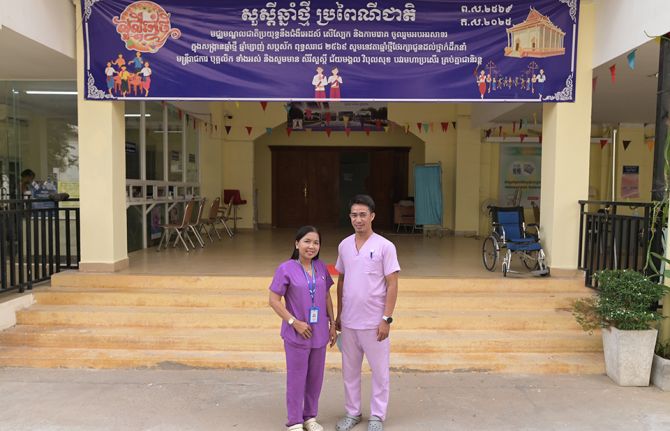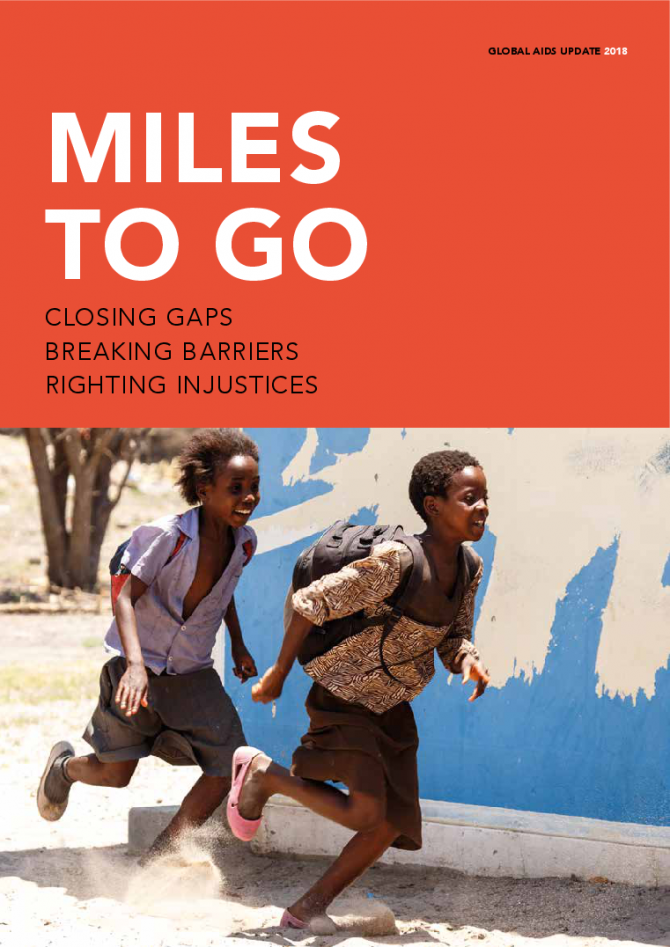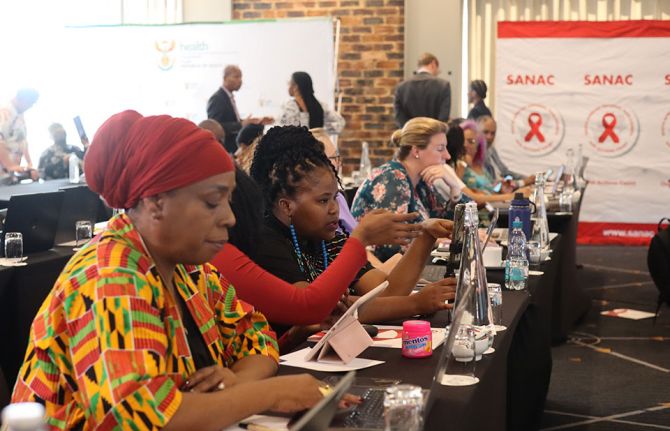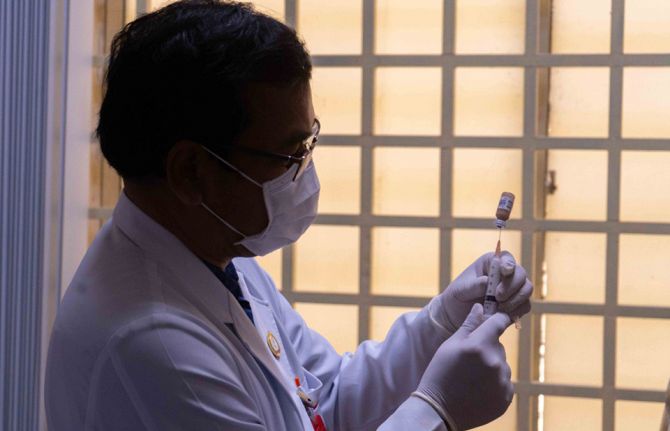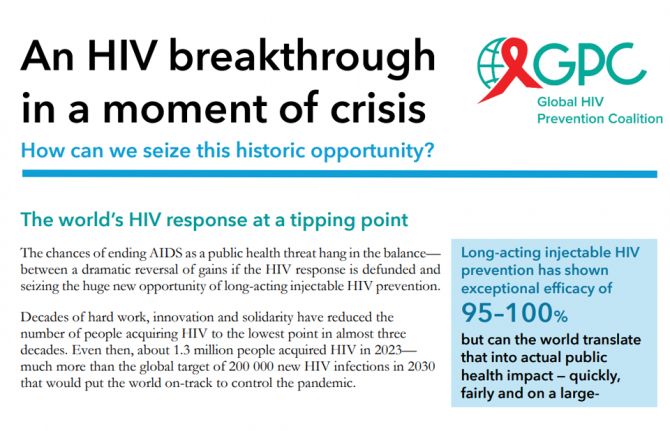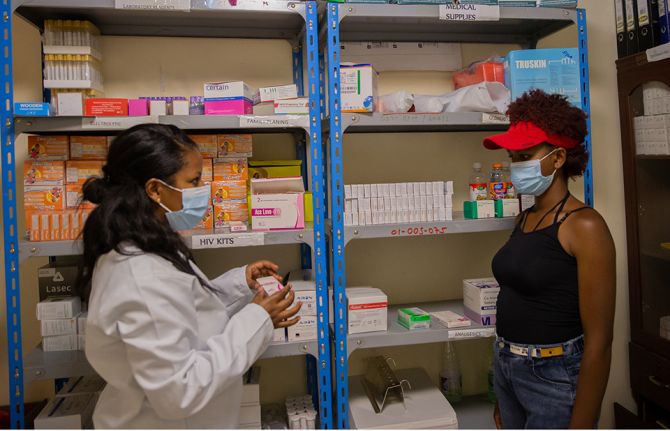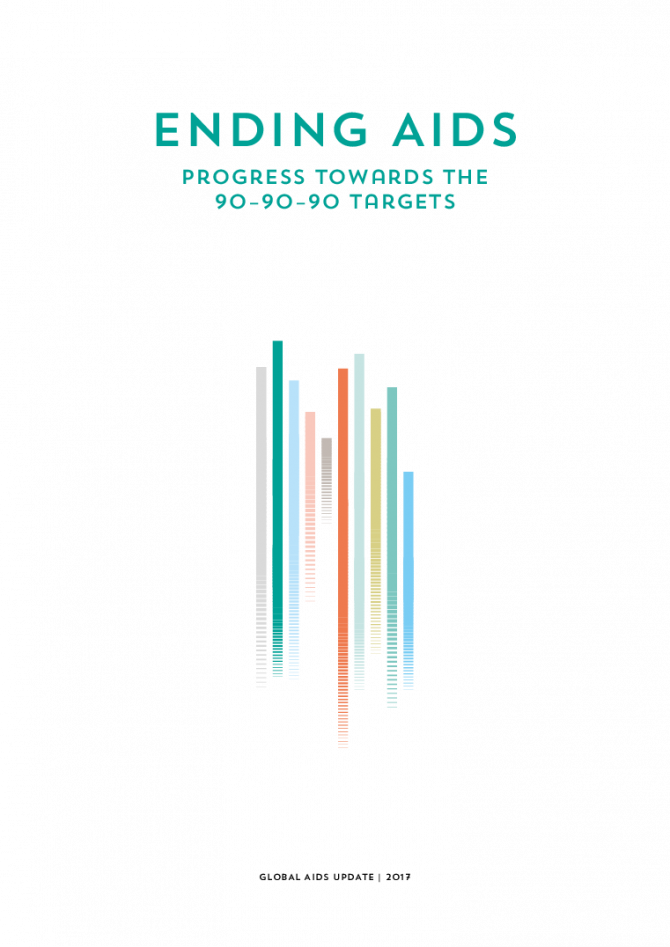
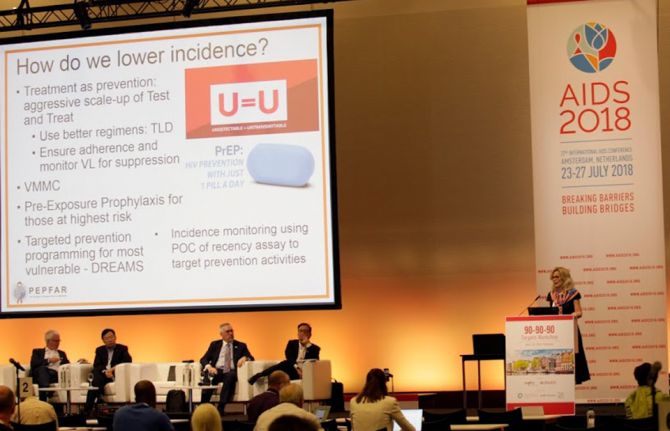


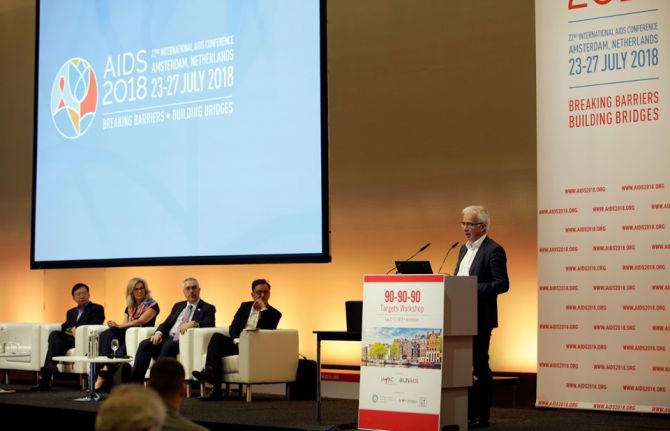
Feature Story
Accelerating towards 90–90–90
24 July 2018
24 July 2018 24 July 2018There has been global progress in accelerating towards the 90–90–90 targets—whereby, by 2020, 90% of people living with HIV will know their HIV status, 90% of people who know their HIV-positive status will be accessing treatment and 90% of people on treatment will have suppressed viral loads—since their launch at the International AIDS Conference in 2014 in Melbourne, Australia.
Four years later, global leaders from civil society, governments, the private sector and academia came together for a two-day workshop, on 21 and 22 July in Amsterdam, Netherlands, to highlight the successes, identify gaps and share best practices in order to reach 90–90–90.
By the end of 2017, the world had achieved 75–79–81. Globally, 75% of people living with HIV know their status, 79% of people living with HIV who know their status are accessing antiretroviral therapy and 81% of people accessing treatment had suppressed viral loads.
The participants at the workshop reviewed the progress made with the rapid adoption of global policies, political commitment, the engagement of civil society and regular evaluation of progress and gaps.
Despite the global successes, evidence presented at the workshop showed that entire regions and populations are still being left behind. Progress in eastern Europe and central Asia, western and central Africa and the Middle East and North Africa is falling behind. Key populations, adolescents and men are not being reached by traditional health facility-based HIV testing services. Lack of political commitment, user fees and stigma and discrimination are some of the barriers to progress.
During the session, the participants discussed ways to identify and correct gaps and direct resources to where they are most needed, including by investing in data collection, reducing the turnaround time from testing to treatment initiation, prioritizing adherence and retention in care, increasing access to affordable viral load testing and the meaningful engagement of civil society in order to reach the people currently being left behind.
The participants also called for the political commitment and financial resources needed to make 90–90–90 a reality everywhere.
Quotes
“It is four years since we launched 90–90–90 and it has taken us further and faster than we could ever have imagined. With 90–90–90, we have built a bridge that spans the essential elements of the HIV treatment cascade. We must not be scared of the future, we must define it. If we quicken the pace, we can reach 30 million with HIV treatment by 2020.”
“Dramatic impact is possible if the core policies are adopted quickly and continuously evolve based on a thorough evaluation of programme needs and gaps. Epidemics evolve and we must rapidly evolve our responses, using the best science and new tools and constantly evaluating why something is not working and adjusting our programmes appropriately.”
“It is important to recognize the catalytic nature of the 90–90–90 targets and leverage successes to quicken the pace in all regions and reach all populations.”
“The most sustainable investment you can make is in communities. It is the most difficult form of investment, but the most valuable way to sustain the response!”
Related

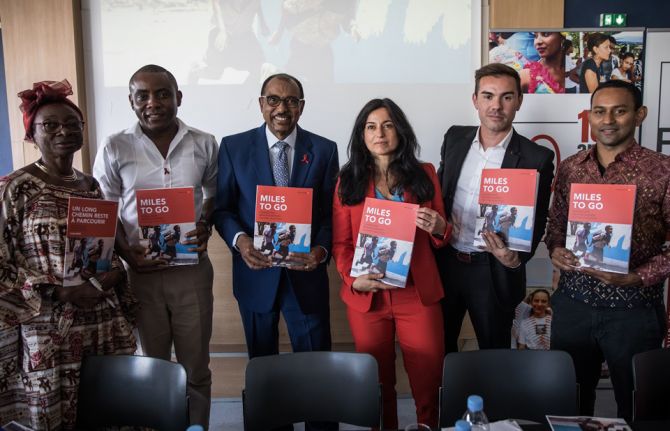
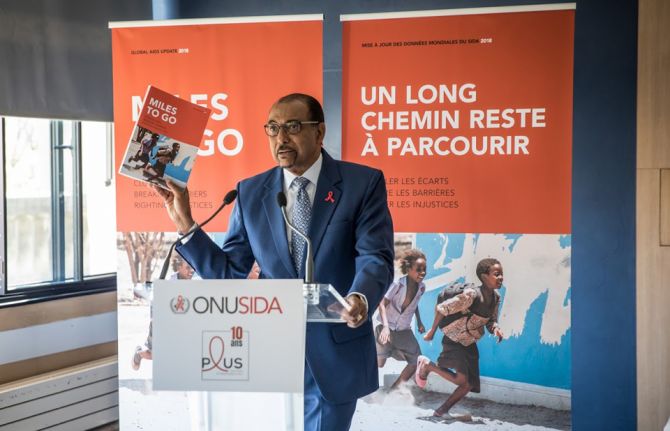
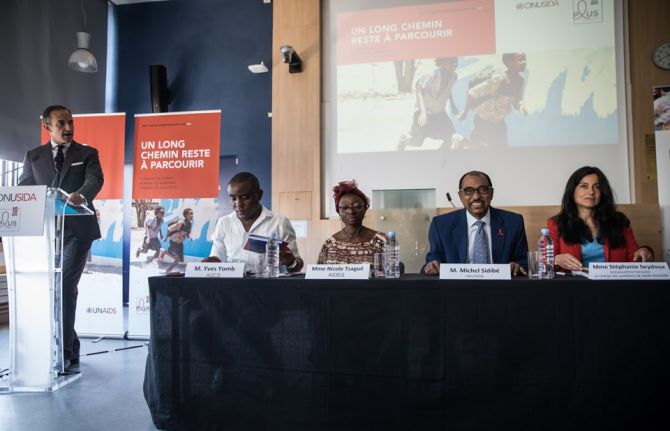
Press Release
UNAIDS warns that progress is slowing and time is running out to reach the 2020 HIV targets
24 July 2018 24 July 2018New HIV infections are rising in around 50 countries, AIDS-related deaths are not falling fast enough and flat resources are threatening success. Half of all new HIV infections are among key populations and their partners, who are still not getting the services they need
PARIS/GENEVA, 18 July 2018—UNAIDS is issuing countries with a stark wake-up call. In a new report, launched today in Paris, France, at an event co-hosted with Coalition PLUS, UNAIDS warns that the global response to HIV is at a precarious point. At the halfway point to the 2020 targets, the report, Miles to go—closing gaps, breaking barriers, righting injustices, warns that the pace of progress is not matching global ambition. It calls for immediate action to put the world on course to reach critical 2020 targets.
“We are sounding the alarm,” said Michel Sidibé, Executive Director of UNAIDS. “Entire regions are falling behind, the huge gains we made for children are not being sustained, women are still most affected, resources are still not matching political commitments and key populations continue to be ignored. All these elements are halting progress and urgently need to be addressed head-on.”
HIV prevention crisis
Global new HIV infections have declined by just 18% in the past seven years, from 2.2 million in 2010 to 1.8 million in 2017. Although this is nearly half the number of new infections compared to the peak in 1996 (3.4 million), the decline is not quick enough to reach the target of fewer than 500 000 by 2020.
The reduction in new HIV infections has been strongest in the region most affected by HIV, eastern and southern Africa, where new HIV infections have been reduced by 30% since 2010. However, new HIV infections are rising in around 50 countries. In eastern Europe and central Asia the annual number of new HIV infections has doubled, and new HIV infections have increased by more than a quarter in the Middle East and North Africa over the past 20 years.
Treatment scale-up should not be taken for granted
Due to the impact of antiretroviral therapy roll-out, the number of AIDS-related deaths is the lowest this century (940 000), having dropped below 1 million for the first time in 2016. Yet, the current pace of decline is not fast enough to reach the 2020 target of fewer than 500 000 AIDS-related deaths.
In just one year, an additional 2.3 million people were newly accessing treatment. This is the largest annual increase to date, bringing the total number of people on treatment to 21.7 million. Almost 60% of the 36.9 million people living with HIV were on treatment in 2017, an important achievement, but to reach the 30 million target there needs to be an annual increase of 2.8 million people, and there are indications that the rate of scale-up is slowing down.
West and central Africa lagging behind
Just 26% of children and 41% of adults living with HIV had access to treatment in western and central Africa in 2017, compared to 59% of children and 66% of adults in eastern and southern Africa. Since 2010, AIDS-related deaths have fallen by 24% in western and central Africa, compared to a 42% decline in eastern and southern Africa.
Nigeria has more than half (51%) of the HIV burden in the region and there has been little progress in reducing new HIV infections in recent years. New HIV infections declined by only 5% (9000) in seven years (from 179 000 to 170 000) and only one in three people living with HIV is on treatment (33%), although HIV treatment coverage has increased from just 24% two years ago.
Progress for children has slowed
The report shows that the gains made for children are not being sustained. New HIV infections among children have declined by only 8% in the past two years, only half (52%) of all children living with HIV are getting treatment and 110 000 children died of AIDS-related illnesses in 2017. Although 80% of pregnant women living with HIV had access to antiretroviral medicines to prevent transmission of HIV to their child in 2017, an unacceptable 180 000 children acquired HIV during birth or breastfeeding—far away from the target of fewer than 40 000 by the end of 2018.
“One child becoming infected with HIV or one child dying of AIDS is one too many,” said Mr Sidibé. “Ending the AIDS epidemic is not a foregone conclusion and the world needs to heed this wake-up call and kick-start an acceleration plan to reach the targets.”
Key populations account for almost half of all new HIV infections worldwide
The report also shows that key populations are not being considered enough in HIV programming. Key populations and their sexual partners account for 47% of new HIV infections worldwide and 97% of new HIV infections in eastern Europe and central Asia, where one third of new HIV infections are among people who inject drugs.
“The right to health for all is non-negotiable,” said Mr Sidibé. “Sex workers, gay men and other men who have sex with men, prisoners, migrants, refugees and transgender people are more affected by HIV but are still being left out from HIV programmes. More investments are needed in reaching these key populations.”
Half of all sex workers in Eswatini, Lesotho, Malawi, South Africa and Zimbabwe are living with HIV. The risk of acquiring HIV is 13 times higher for female sex workers, 27 times higher among men who have sex with men, 23 times higher among people who inject drugs and 12 times higher for transgender women.
“Communities are echoing UNAIDS’ call,” said Vincent Pelletier, positive leader and Executive Director of Coalition PLUS. “We need universal access to adapted prevention services, and protection from discrimination. We call upon world leaders to match commitments with funding, in both donor and implementing countries.”
Stigma and discrimination persists
Discrimination by health-care workers, law enforcement, teachers, employers, parents, religious leaders and community members is preventing young people, people living with HIV and key populations from accessing HIV prevention, treatment and other sexual and reproductive health services.
Across 19 countries, one in five people living with HIV responding to surveys reported being denied health care and one in five people living with HIV avoided visiting a health facility for fear of stigma or discrimination related to their HIV status. In five of 13 countries with available data, more than 40% of people said they think that children living with HIV should not be able to attend school with children who are HIV-negative.
New agenda needed to stop violence against women
In 2017, around 58% of all new HIV infections among adults more than 15 years old were among women and 6600 young women between the ages of 15 and 24 years became infected with HIV every week. Increased vulnerability to HIV has been linked to violence. More than one in three women worldwide have experienced physical or sexual violence, often at the hands of their intimate partners.
“Inequality, a lack of empowerment and violence against women are human rights violations and are continuing to fuel new HIV infections,” said Mr Sidibé. “We must not let up in our efforts to address and root out harassment, abuse and violence, whether at home, in the community or in the workplace.”
90–90–90 can and must be achieved
There has been progress towards the 90–90–90 targets. Three quarters (75%) of all people living with HIV now know their HIV status; of the people who know their status, 79% were accessing treatment in 2017, and of the people accessing treatment, 81% had supressed viral loads.
Six countries, Botswana, Cambodia, Denmark, Eswatini, Namibia and the Netherlands, have already reached the 90–90–90 targets and seven more countries are on track. The largest gap is in the first 90; in western and central Africa, for example, only 48% of people living with HIV know their status.
A big year for the response to tuberculosis
There have been gains in treating and diagnosing HIV among people with tuberculosis (TB)—around nine out of 10 people with TB who are diagnosed with HIV are on treatment. However, TB is still the biggest killer of people living with HIV and three out of five people starting HIV treatment are not screened, tested or treated for TB. The United Nations High-Level Meeting on Tuberculosis in September 2018 is an opportunity to bolster momentum around reaching the TB/HIV targets.
The cost of inaction
Around US$ 20.6 billion was available for the AIDS response in 2017—a rise of 8% since 2016 and 80% of the 2020 target set by the United Nations General Assembly. However, there were no significant new commitments and as a result the one-year rise in resources is unlikely to continue. Achieving the 2020 targets will only be possible if investments from both donor and domestic sources increase.
Ways forward
From townships in southern Africa to remote villages in the Amazon to mega-cities in Asia, the dozens of innovations contained within the pages of the report show that collaboration between health systems and individual communities can successfully reduce stigma and discrimination and deliver services to the vast majority of the people who need them the most.
These innovative approaches continue to drive the solutions needed to achieve the 2020 targets. When combination HIV prevention—including condoms and voluntary medical male circumcision—is pursued at scale, population-level declines in new HIV infections are achieved. Oral pre-exposure prophylaxis (PrEP) is having an impact, particularly among key populations. Offering HIV testing and counselling to family members and the sexual partners of people diagnosed with HIV has significantly improved testing access.
Eastern and southern Africa has seen significant domestic and international investments coupled with strong political commitment and community engagement and is showing significant progress in achieving the 2020 targets.
“For every challenge there is a solution,” said Mr Sidibé. “It is the responsibility of political leaders, national governments and the international community to make sufficient financial investments and establish the legal and policy environments needed to bring the work of innovators to the global scale. Doing so will create the momentum needed to reach the targets by 2020.”
In 2017, an estimated:
36.9 million [31.1 million–43.9 million] people globally were living with HIV
21.7 million [19.1 million–22.6 million] people were accessing treatment
1.8 million [1.4 million–2.4 million] people became newly infected with HIV
940 000 [670 000–1.3 million] people died from AIDS-related illnesses
UNAIDS
The Joint United Nations Programme on HIV/AIDS (UNAIDS) leads and inspires the world to achieve its shared vision of zero new HIV infections, zero discrimination and zero AIDS-related deaths. UNAIDS unites the efforts of 11 UN organizations—UNHCR, UNICEF, WFP, UNDP, UNFPA, UNODC, UN Women, ILO, UNESCO, WHO and the World Bank—and works closely with global and national partners towards ending the AIDS epidemic by 2030 as part of the Sustainable Development Goals. Learn more at unaids.org and connect with us on Facebook, Twitter, Instagram and YouTube.
Documents
Miles to go—closing gaps, breaking barriers, righting injustices
13 August 2018
The global AIDS response is at a precarious point—partial success in saving lives and stopping new HIV infections is giving way to complacency. At the halfway point to the 2020 targets, the pace of progress is not matching the global ambition. This report is a wake-up call—action now can still put us back on course to reach the 2020 targets.

Feature Story
Monaco becomes a Fast-Track city
09 July 2018
09 July 2018 09 July 2018Monaco has joined a network of more than 250 cities worldwide by signing the Paris Declaration, making a commitment to Fast-Track its response to the HIV epidemic and adopt the 90–90–90 targets.
The 90-90-90 targets are that, by 2020, 90% of all people living with HIV will know their HIV status, 90% of all people living with HIV will have access to antiretroviral therapy and 90% of all people on antiretroviral therapy will have viral suppression.
At a ceremony attended by Princess Stephanie of Monaco, who is also the President of Fight AIDS Monaco and a UNAIDS International Goodwill Ambassador, the Mayor of the Principality, Georges Marsan, stressed the importance of testing as the entry point to getting people on treatment and keeping them healthy.
Twice a year since 2012, Monaco has taken its HIV testing campaign to the streets of the principality through its Test in the City campaign. In his speech, the mayor also underlined the importance of preventing new HIV infections.
In his remarks at the event, UNAIDS Executive Director Michel Sidibé recalled visiting South Africa with Princess Stephanie in 2009, when just several hundred thousand people in the country had access to antiretroviral therapy to keep them alive and healthy. Today, he said, that number has expanded to 4.3 million people.
Mr Sidibé added that cities had a vital role to play as hubs of innovation and research and that they could help reach forgotten groups of people at risk of HIV infection.
Also present at the event were Monaco’s Minister of Health and Social Affairs, Didier Gamerdinger, and the Vice-President of the International Association of Providers of AIDS Care, Bertrand Audoin.

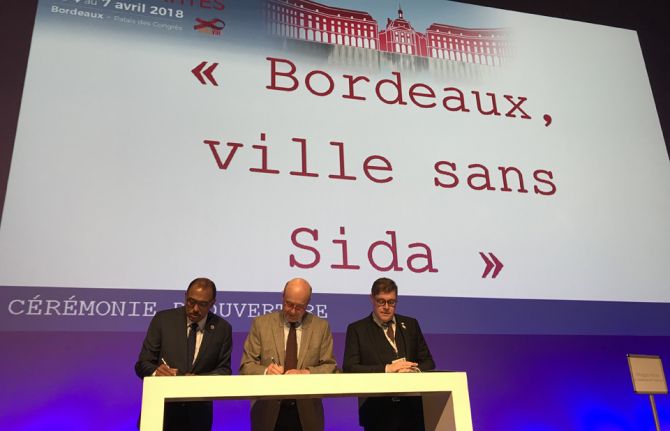
Update
Bordeaux signs Paris Declaration to end the AIDS epidemic in cities
05 April 2018
05 April 2018 05 April 2018On 4 April, Bordeaux became the latest city to sign up to the Paris Declaration to end the AIDS epidemic in cities. The Mayor of Bordeaux and former French Prime Minister Alain Juppé signed the declaration alongside UNAIDS Executive Director Michel Sidibé at the opening of AFRAVIH, the international francophone HIV and hepatitis conference being held in Bordeaux, France, from 4 to 7 April.
In signing the Paris Declaration, mayors commit to putting their cities on the Fast-Track to ending the AIDS epidemic. Mr Juppé committed to achieving the 90–90–90 targets—whereby 90% of people living with HIV know their HIV status, 90% of people who know their HIV-positive status are accessing treatment and 90% of people on treatment have suppressed viral loads—in Bordeaux in the next two years. He also committed to eliminating stigma and discrimination and developing a people-centred approach to the AIDS response. In addition, he said, it was crucial to educate young people on HIV, citing a lack of knowledge among French young people.
Since its launch on 1 December 2014, more than 250 cities and municipalities have signed the Paris Declaration. Leaders in those cities have recognized that their strategies for responding to the AIDS epidemic also offer them a platform to address the need for social inclusion, protection, safety and health.
With more than half of the world’s population currently living in cities and urban areas accounting for a large and growing proportion of people living with HIV, tuberculosis (TB) and other diseases, cities will play an essential role in ending AIDS. The risk of contracting, and vulnerability to, HIV and TB is often higher in urban areas compared to rural areas, owing to a number of reasons, including migration, unemployment and social and economic inequalities.
The AFRAVIH conference will focus on the 90–90–90 targets as well as innovations on HIV treatment and prevention and on scientific advances.
Quotes
“By signing this declaration, we commit to ensure that services are delivered to everyone in an equitable and efficient way. It’s not just HIV that is at stake, it’s a question of health overall.”
“We must push for further integration of health services and put fragile communities at the centre of our efforts. This is the way to build resilient communities and cities worldwide.”
“Regardless of whether Bamako is ahead of Bordeaux since we signed the Paris Declaration ahead of Bordeaux, our priority remains the same: HIV prevention and patient care so that we can eliminate AIDS.”
Region/country

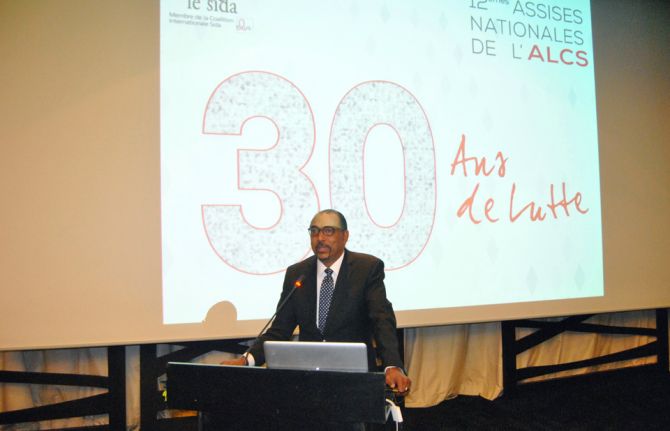


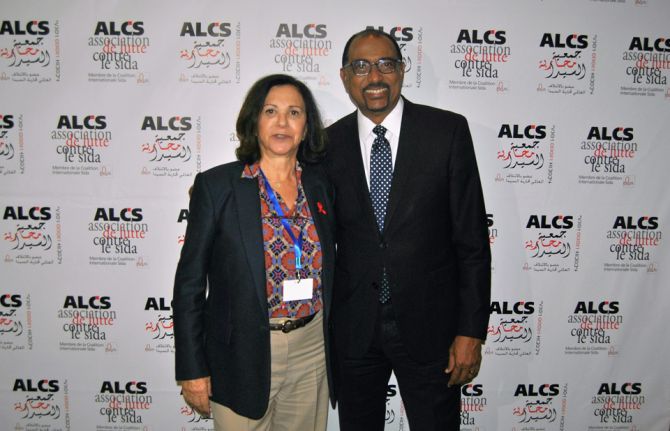
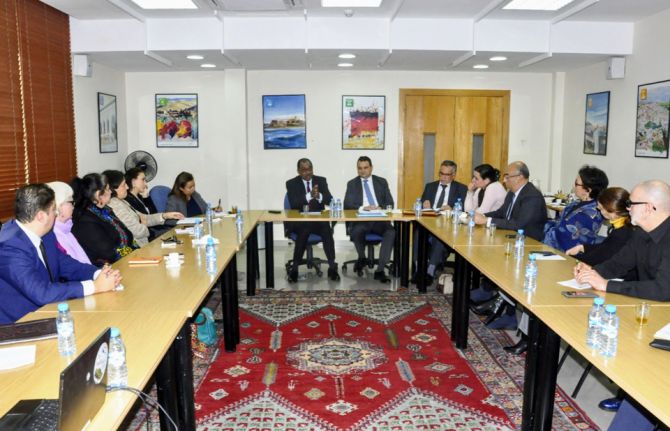
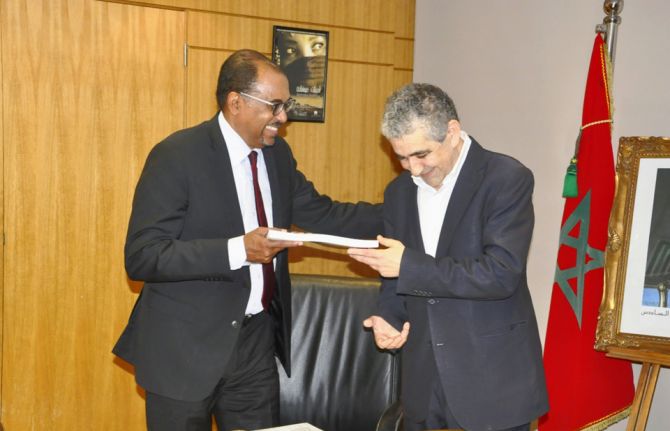
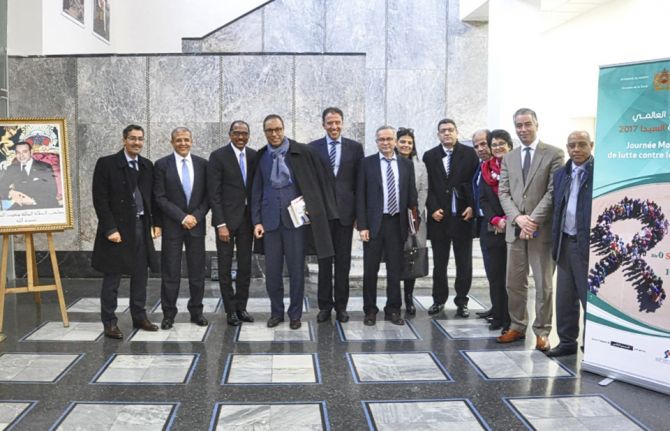
Update
A 30-year response to HIV in Morocco
19 January 2018
19 January 2018 19 January 2018Morocco marks 30 years of its response to HIV in 2018, with much to celebrate. Concerted efforts in the country have resulted in a 42% reduction in new HIV infections since 2010, significantly greater than the decline across the Middle East and North Africa of just 4%. HIV treatment coverage has also increased in the country, from 16% in 2010 to 48% in 2016.
Morocco has also managed to keep HIV prevalence low among the general population (0.1%). However, there are areas of serious concern. Data show that HIV prevalence is high among populations at higher risk of HIV infection, such as female sex workers (1.3%), people who inject drugs (7.9%) and migrants (3%), showing the need to do more to reach key populations with HIV services. Morocco is scaling up efforts to reach key populations through combined prevention programmes, substitution treatment for people who use drugs and increasing HIV testing.
The Executive Director of UNAIDS, Michel Sidibé, visited Morocco to show his support to the 30-year response to HIV. During the visit he met with the President of the National Council of Human Rights (CNDH), the Secretary-General of the Ministry of Health, the Minister of Foreign Affairs and International Cooperation and the United Nations Resident Coordinator and Country Team.
He stressed the importance of the United Nations Country Team’s commitment to United Nations reform and to responding to HIV through the Joint Plan. He noted the importance of having a national strategy on human rights and HIV and congratulated the CNDH as a pioneer in the region. He praised the initiative of the CNDH for carrying out training in human rights and citizenship and highlighted the important role that Morocco can play in efforts to recruit 2 million community health workers in Africa and in encouraging the local production of medicines.
Mr Sidibé congratulated the Minister of Foreign Affairs and International Cooperation on the progress of the AIDS response under the leadership of King Mohammed VI, the government’s partnership with civil society and the increase in domestic funding for HIV.
Mr Sidibé took part in the opening ceremony of the 12th meeting of the Association for the Fight against AIDS (ALCS) to celebrate the 30-year response. ALCS has been at the forefront of the response to HIV in Morocco, working on prevention for key populations, HIV counselling and testing, psychosocial support, advocacy, resource mobilization and introducing new innovations, including community screening and pre-exposure prophylaxis.
At the end of 2016, there were estimated to be 22 000 people living with HIV in Morocco, fewer than 1000 new HIV infections and fewer than 1000 AIDS-related deaths. UNAIDS is working closely with Morocco to expand innovative approaches to HIV prevention and testing for key populations, expand antiretroviral treatment services and their integration into the health system, implement a road map to eliminate mother-to-child transmission of HIV and implement a strategy for zero discrimination. UNAIDS also coordinates the United Nations Joint Support Plan and works to ensure the availability of strategic information and mobilize and implement grants from the Global Fund to Fight AIDS, Tuberculosis and Malaria.
Quotes
“Morocco is a model for other countries and will reach the 90–90–90 targets by 2020. It is important to be optimistic; I am an incorrigible optimist.”
“Morocco highly appreciates what is being done by UNAIDS at the international and national levels.”
“We know that we are on track and that we must not relax efforts in prevention and access to treatment, for why not succeed in ending the epidemic in our country by 2030.”
Region/country
Related
Documents
2017 Global AIDS update - Ending AIDS: progress towards the 90–90–90 targets
20 July 2017
This report clearly demonstrates the power of the 90–90–90 targets and what can be achieved in a short time. It shows that innovations are possible at every level—from communities to research laboratories, from villages to cities. It illustrates the power of political leadership to make the impossible possible.

